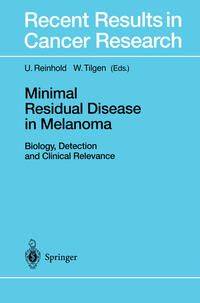
Knowledge about diagnostic procedures in melanoma has in creased rapidly within the past few years. Single tumor cells have been identified in normal tissue such as sentinel lymph nodes, as well as in bone marrow, peripheral blood, and other bodily fluids and cells, by molecular technologies. The introduction of polymerase chain reaction-based methods can be regarded as a prototype of this dramatic development towards molecular approaches in new diagnostic procedures. This fact opens up the possibility of clinical use in patients and of influencing treatment strategies. Considerable discrepancies have been described, how ever, in the success rates of these new techniques for the detec tion of minimal residual disease in cancer patients. Despite fav orable results reported by different groups of investigators, it will take several years to define the clinical and pathophysiological relevance of new diagnostic procedures. The 1st International Symposium "Minimal Residual Disease in Melanoma: Biology, Detection and Clinical Relevance of Microme tastases", held in September 1999 in Homburg/Saar, Germany, fo cused on recent developments in this particular area of cancer re search. The purpose of the meeting was to stimulate discussion and exchange of new data and ideas by renowned international scientists. The aim of this volume is to summarize major topics of basic research and clinical investigations presented by invited experts in this fascinating but still. controversial field of melanoma re search.